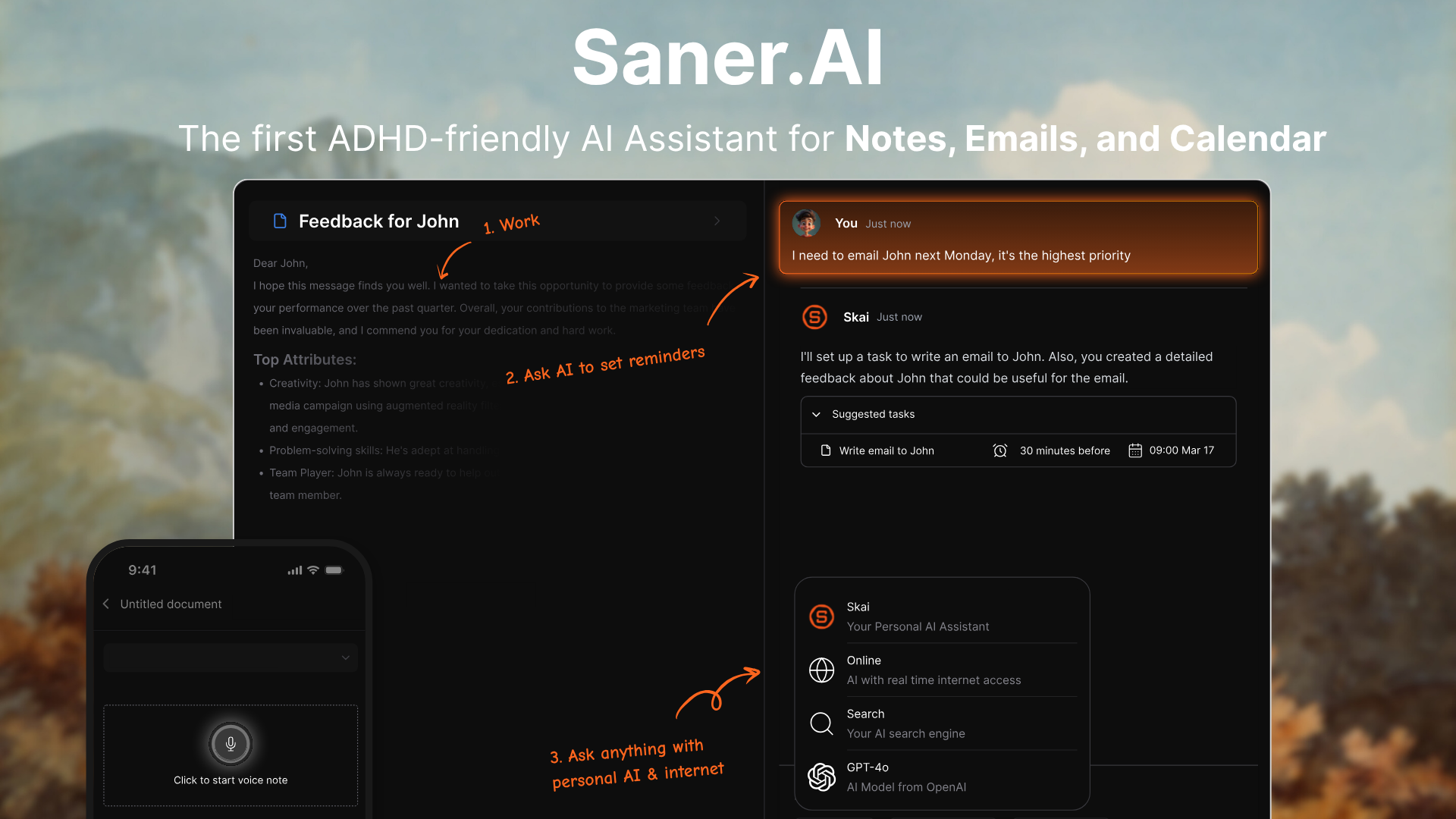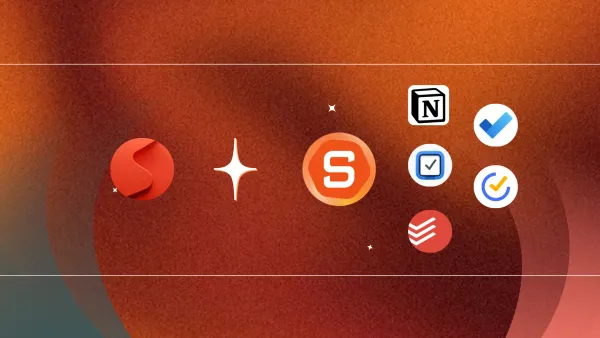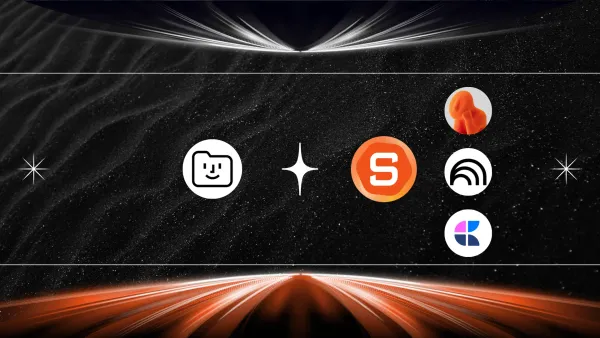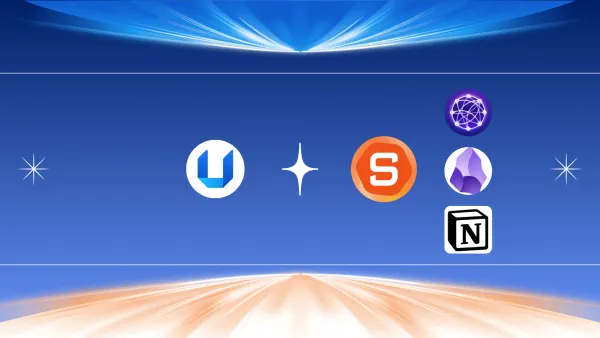5 Effective Strategies to Manage ADHD Without Medication [Full 2025]

I. Understanding ADHD: The First Step to Managing It
ADHD, or Attention-Deficit/Hyperactivity Disorder, is a common neurodevelopmental condition that affects focus, self-regulation, and task management.
📊 In the U.S. alone:
- An estimated 6.1 million children (11% of those aged 4–17) have been diagnosed with ADHD.
- Around 8.7 million adults are currently living with ADHD.
- Globally, persistent adult ADHD affects about 2.6% of the population, or nearly 140 million people.
And the numbers are growing. Experts believe this rise is partly due to better awareness, improved diagnostic tools, and modern lifestyle shifts that can make symptoms harder to manage.
What Is ADHD?

People with ADHD often struggle with things like staying on track, completing tasks, managing time, and organizing thoughts, making everyday responsibilities feel overwhelming.
ADHD isn’t just about being distracted. It’s a complex condition that requires support, structure, and the right tools to manage effectively.
💡 The 3 Types of ADHD
ADHD symptoms fall into three main categories, and understanding your type can help you manage ADHD better:
- Inattentive Type
- Easily distracted
- Struggles to stay organized
- Often forgets tasks or details
- It may seem daydreamy or disconnected
- Hyperactive-Impulsive Type
- Constant movement or fidgeting
- Interrupts or talks excessively
- Finds it hard to sit still or wait in lines
- Often acts without thinking
- Combined Type
- A mix of both inattentive and hyperactive symptoms
- This is the most common presentation in adults
👉 Source: NIH - Understanding ADHD subtypes
🚫 Common Myths That Make ADHD Harder to Manage
Misconceptions can delay diagnosis, treatment, and self-acceptance. Let’s set the record straight:
- Myth: ADHD is just bad parenting or a lack of discipline
Truth: ADHD is a medical condition rooted in brain chemistry and genetics. - Myth: You only have ADHD if you're hyperactive
Truth: Many people with ADHD are quietly inattentive or internally restless. - Myth: ADHD goes away in adulthood
Truth: ADHD is lifelong. Around 50–80% of children with ADHD continue to experience symptoms as adults. - Myth: ADHD = lazy or not smart
Truth: ADHD has nothing to do with intelligence. In fact, many highly successful people have ADHD.
Understanding these myths is the first step toward managing ADHD with compassion instead of shame.
🧬 What Causes ADHD?
There’s no single cause of ADHD, but research shows it’s likely due to a combination of genetics, brain differences, and environmental influences.

✅ What science says:
- Genetics: ADHD tends to run in families. If a parent has ADHD, their child has a higher chance of having it too.
- Brain function: Differences in brain chemistry and how dopamine is regulated can affect attention and impulse control.
- Environmental factors: Prenatal exposure to substances like nicotine or alcohol, premature birth, or early brain injury can increase risk.
❌ What doesn’t cause ADHD:
- Too much sugar
- Watching TV or playing video games
- Poor parenting
These are not proven causes, though they can worsen symptoms in some cases. ADHD is not a moral failure - it’s a brain-based condition that can be managed with the right support.
🔍 Symptoms of ADHD (And What They Look Like in Real Life)
ADHD symptoms can vary from person to person, but they usually show up in these core areas:
1. Inattention
- Often loses track of details
- Has trouble finishing tasks
- Avoids mentally demanding work
- Gets distracted by unrelated thoughts
- Forgetful in daily routines (keys, deadlines, names)
2. Hyperactivity-Impulsivity
- Constant fidgeting or restlessness
- Speaks out of turn or interrupts
- Difficulty staying seated for long periods
- Acts without considering the consequences
3. Emotional Regulation Challenges
- Mood swings and frustration
- Sensitivity to criticism
- Difficulty bouncing back from setbacks
- Low self-esteem from repeated struggles
👉 Learn more about ADHD symptoms
🧪 How ADHD Is Diagnosed
Deciding if a person has ADHD is a process with several steps. There is no single test to diagnose ADHD. A thorough diagnosis typically involves:
- Interviews with a licensed psychologist or psychiatrist
- Behavior checklists and self-report questionnaires
- Reviewing school/work performance and medical history
- Ruling out other causes like anxiety, depression, or learning differences
A correct diagnosis can be life-changing - it helps you understand how your brain works and what tools or treatments will actually help.
👉 CDC: How ADHD is diagnosed
👉 Read one person's ADHD diagnosis story
🎯 The Real-World Impact of ADHD
ADHD can affect nearly every area of life, but with proper management, it doesn’t have to define you.
🏫 In School
- Missed deadlines, incomplete assignments
- Trouble focusing during lectures
- Poor grades despite high effort or intelligence
👉 Study: ADHD and academic performance
💼 At Work
- Challenges with time management and prioritization
- Forgetting tasks or skipping steps
- Burnout from overcompensating
👉 Study: ADHD’s effect on job performance
❤️ In Relationships
- Struggles with communication and emotional control
- Feeling misunderstood or overly criticized
- Higher stress levels for both individuals and families
👉 ADHD and family dynamics
II. Strategies to Manage ADHD Without Medication
If you have adult ADHD, you probably take medicine to ease your symptoms. But alongside it, there are strategies to manage ADHD without medication
A. Manage ADHD with Cognitive Behavioral Therapy (CBT)

Cognitive Behavioral Therapy (CBT) is one of the most effective non-medication treatments to manage ADHD, especially in adults. Rather than focusing only on behavior, CBT helps rewire how you think, so you can function better, not just feel better.
How CBT Helps ADHD
CBT teaches you to:
- Recognize and challenge negative thought patterns
- Build practical strategies for time management, focus, and organization
- Strengthen executive functioning skills like planning and prioritizing
It’s not about talking in circles. It’s about developing the tools to handle real-life ADHD challenges, from missed deadlines to emotional spirals.
What to Expect from CBT
- Early sessions focus on your daily struggles - like procrastination, overwhelm, or disorganization
- Together with your therapist, you’ll set goals and learn how your thoughts affect your actions
- You'll practice small skills between sessions (yep, there's homework)
- Over time, you’ll learn to shift your mindset and build healthier habits
Proven Benefits of CBT for Managing ADHD
📌 According to research, CBT can help with:
- Emotional regulation and mood swings
- Time management and task follow-through
- Focus and distractibility
- Self-defeating beliefs like “I’ll never be consistent”
B. Manage ADHD Through Lifestyle Habits

ADHD doesn’t start or stop at the brain—it’s a whole-body experience. That’s why exercise, sleep, and nutrition are three of the most overlooked (but powerful) ways to manage ADHD symptoms.
🏋️♂️ Exercise for ADHD
Moving your body helps your brain - literally.
- Boosts dopamine, serotonin, and endorphins → improves mood, motivation, and attention
- Supports executive function and self-regulation
- Reduces stress and improves sleep
Some studies even suggest exercise creates epigenetic changes that support brain growth and learning capacity.
🔗 Exercise & ADHD: What the Research Says
🔗 Best ADHD-friendly workouts,
😴 Sleep: Your ADHD Reset Button
Sleep problems are common with ADHD, and they can make everything worse. Poor sleep = more impulsivity, less focus, mood swings, and memory problems.
But improving sleep hygiene can be a game-changer.
How to Sleep Better with ADHD:
- Stick to a routine: Wake and sleep at the same time every day
- Create a wind-down ritual: Read, take a bath, or use white noise
- Avoid screens & caffeine before bed: These mess with your melatonin
- Practice relaxation: Try deep breathing, progressive muscle relaxation, or guided meditation
- Optimize your environment: Cool, dark, quiet room + comfy bedding
The result? Better focus, memory, emotional regulation, and energy to handle ADHD.
🥦 Nutrition to Fuel an ADHD Brain
Food is fuel - especially for ADHD brains that burn through energy quickly and struggle with focus.
Focus on These Nutrients:
- Protein: Supports neurotransmitter production. Find it in lean meats, eggs, nuts, soy, and dairy
- Complex carbs: Help prevent blood sugar spikes and crashes. Think fruits, oats, brown rice, and beans
- Healthy fats (Omega-3s): Support brain health and attention (e.g., salmon, walnuts, chia seeds)
- Zinc: Regulates dopamine and may boost ADHD medication effectiveness
- Iron: Low iron = low dopamine = more ADHD symptoms
- Magnesium: Supports focus and has a calming effect
- Vitamin C: Aids dopamine activity and immune function
- Vitamin D: Low levels are linked to worsened ADHD symptoms
- B Vitamins (especially B6): May increase alertness and cognitive function
🔗 ADHD Nutrition Guide: What to Eat for Focus
C. Manage ADHD by Creating ADHD-Friendly Environments

Your environment plays a huge role in how your brain performs, especially when managing ADHD. Simple adjustments to your surroundings can reduce distractions, increase focus, and make daily life feel less chaotic.
Here is how to create an ADHD-friendly environment:
- 🔇 Minimize Distractions,
Use noise-cancelling headphones, visual blockers, or designate quiet zones for focused work. Even small things like turning off app notifications can make a big difference. - 🕰️ Flexible Work Options
Flexible schedules, asynchronous work, or remote setups can help ADHDers better manage energy levels and work rhythms, especially on days when executive function is low. - ⏰ Set Up Reminder Systems
Use written instructions, visual checklists, or reminder apps to stay on top of tasks. Tools like Saner.AI can extract to-dos from your notes and emails and schedule reminders for you.
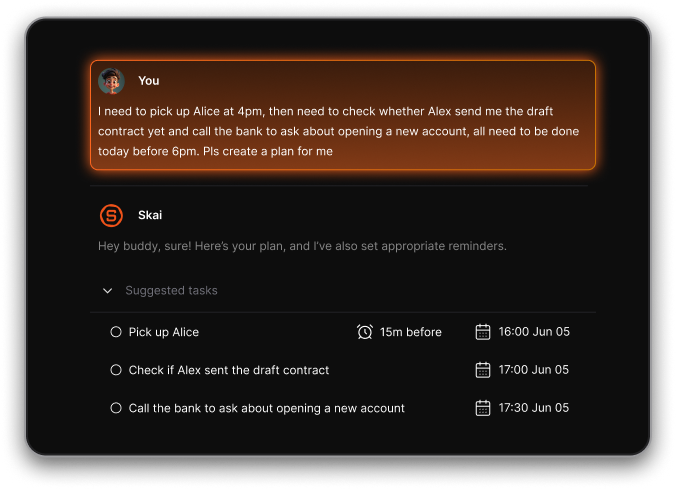
- 🪑 Workspace Tweaks
Design a workspace that works for you - whether it’s a standing desk, a minimal setup, or a cozy corner. ADHD brains often need physical cues to stay on task. - 📋 Predictable Routines
Consistent structures and clear expectations reduce mental load. Keep your routine familiar, with as few surprise changes as possible.
D. Coping Skills, Self-Care, and Stress Management for ADHD

Managing ADHD isn’t just about structure and strategy—it’s also about taking care of your mental and emotional well-being. Self-care and stress management aren’t “nice-to-haves”; they’re critical.
Here are practical ways to manage ADHD through self-care:
- 🧘 Mindfulness & Meditation
Deep breathing, guided meditation, or progressive muscle relaxation can help reduce reactivity and improve emotional regulation. Even 5 minutes a day can make a difference.
👉 Try these ADHD-specific mindfulness strategies - 🗓️ Build a Solid Routine
Regular wake-up, meal, and sleep times can help your nervous system feel more anchored. ADHD brains thrive with predictability - even if the routine is simple. - 💬 Social Support
Community is powerful. Whether it’s ADHD support groups, a therapist, or a few friends who “get it,” human connection helps regulate stress and build resilience. - 📵 Digital Detox Time
ADHD + screens = time warp. Taking intentional breaks from tech can reset your brain and improve focus. - 💛 Self-Compassion & Positive Self-Talk
ADHD often comes with a lifetime of self-criticism. Practicing self-kindness isn’t just emotional—it’s functional. It builds motivation, confidence, and mental flexibility.
Techniques and Tools to Manage ADHD (That Actually Work)
To effectively manage ADHD, you need more than good intentions - you need practical techniques and tools designed for how ADHD brains actually work. Here’s a breakdown of proven strategies to help improve focus, organization, and productivity.
✍️ Note-Taking That Works for ADHD Brains
Note-taking is one of the most essential (yet most frustrating) skills for many people with ADHD. Whether you’re in a meeting, a class, or planning your day, organizing your thoughts in a way you can actually use later is crucial.
4 Common ADHD Note-Taking Challenges:
- Splitting attention between listening and writing is tough, leading to missed info
- Messy or disorganized notes—hard to date, label, or review later
- Weak retention and review due to memory and processing issues
- Using ineffective methods that weren’t designed for neurodiverse thinkers
Most mainstream note apps aren’t ADHD-friendly. What helps instead?
✅ Simple, distraction-free interfaces
✅ AI-powered organization (e.g., turning rants into to-dos)
✅ Natural language search to instantly find what matters
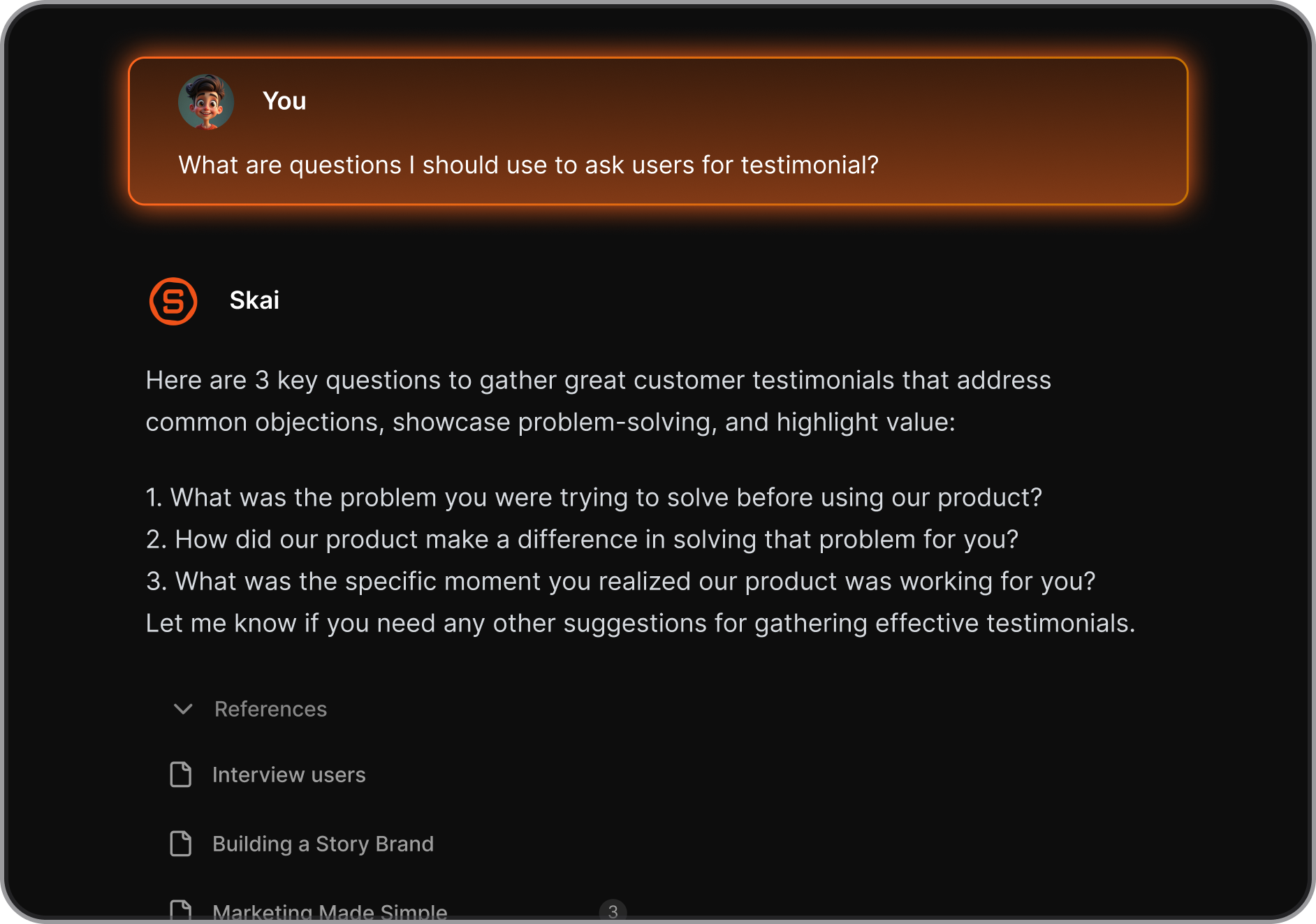
🧠 Discover the ideal note-taking app for ADHD and how to organize your meeting notes effectively to stop forgetting what you already captured.
⏳ Time Management Strategies for ADHD
Let’s be real: managing time is one of the hardest ADHD symptoms to deal with. It’s not just about procrastination - it’s about time blindness, memory lapses, and the inability to predict how long tasks will actually take.
10 Common ADHD Time Management Struggles:
- Losing track of time easily
- Underestimating how long things take
- Trouble recalling when tasks are due
- Difficulty sequencing tasks
- Getting stuck in task loops
- Procrastination due to overwhelm
- Struggles with transitions
- Poor sense of elapsed time
- Forgetting time-based commitments
- Inability to accurately predict deadlines
📘 The good news? There are ADHD-proven methods that work:
- Pomodoro Technique: Break work into 25-minute sprints with rest
- Time Blocking: Schedule exact time slots for specific activities
- Visual Timers: Use clocks, countdowns, or apps that show time passing
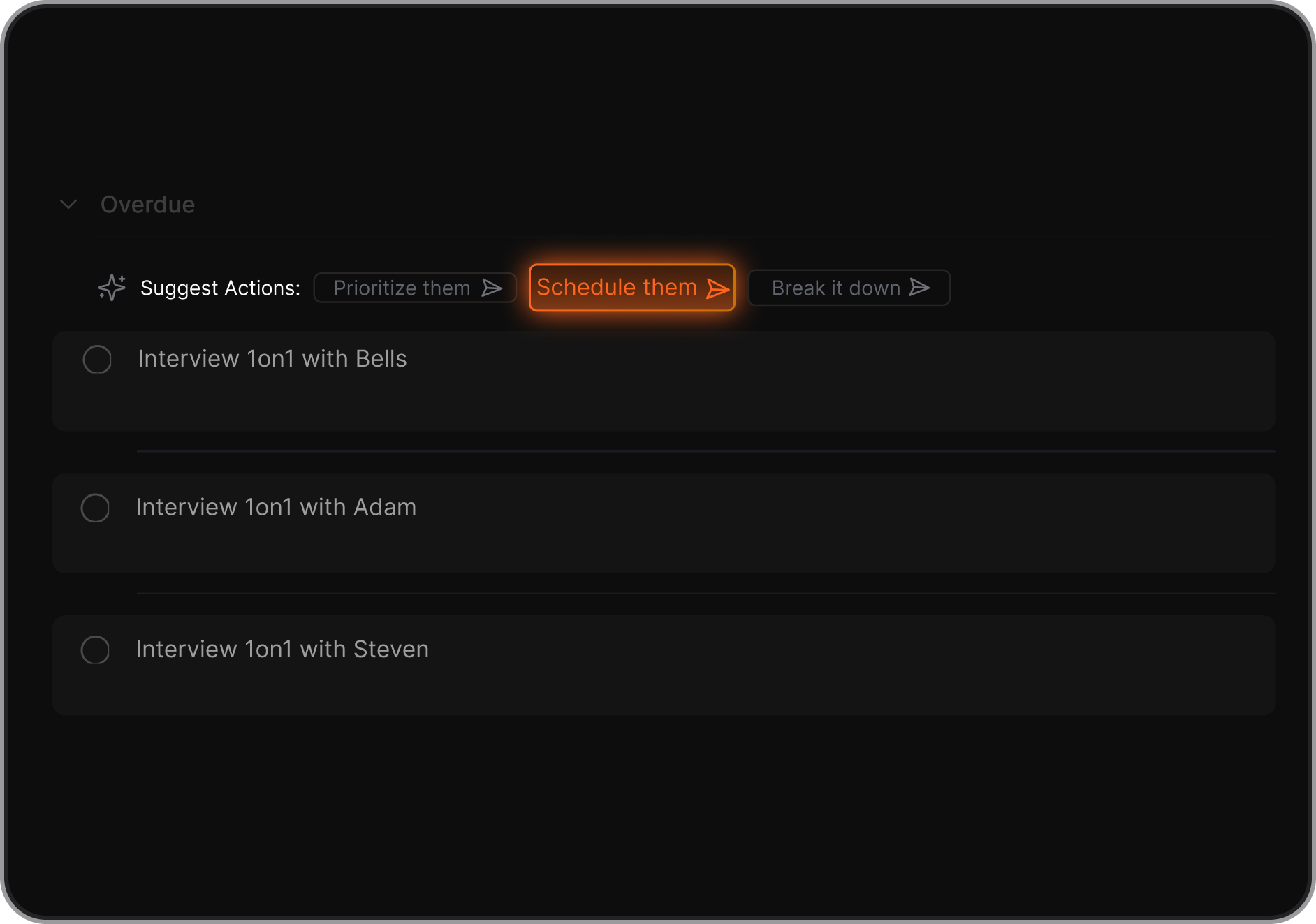
💡 Explore the ADHD time management tools for more tips and workflow
✅ Task Management Techniques for ADHD
ADHD affects how we initiate, switch, and complete tasks, so traditional productivity advice often falls flat.
4 Common ADHD Task Management Challenges:
- Sustaining attention: It’s hard to stay focused long enough to finish
- Task Switching Fatigue: Changing gears can lead to mental crashes
👉 Why task switching is so hard with ADHD - Task Paralysis: Feeling overwhelmed leads to complete shutdown
👉 Read more about ADHD task paralysis - Task Initiation Struggles: Getting started feels impossible, even for small things
👉 Learn about ADHD and task initiation
📌 Tools that can help: Saner.AI: Turn rants or notes into clear tasks with reminders
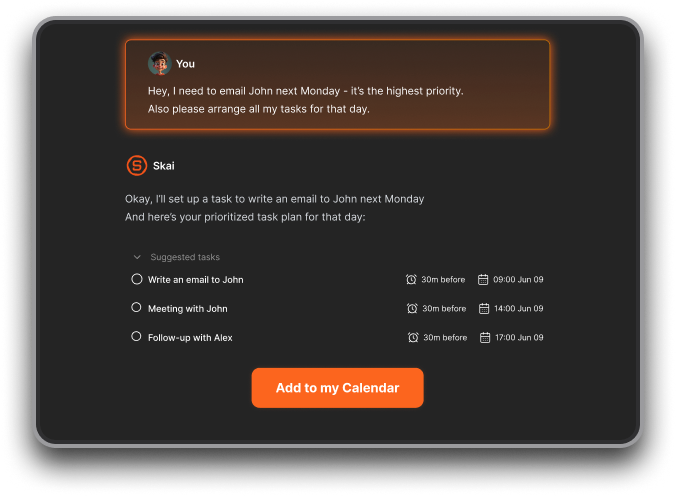
III. Final Thoughts: Managing ADHD Is About Working With Your Brain, Not Against It
There’s no one-size-fits-all solution to managing ADHD, but there are proven strategies that can make daily life feel a lot less chaotic.
Whether you’re tackling scattered notes, time blindness, or task paralysis, the key is to combine practical tools with ADHD-friendly techniques that support how your brain works best.
To recap:
- Cognitive Behavioral Therapy helps shift unhelpful thought patterns and build executive function
- Lifestyle habits like sleep, movement, and nutrition regulate energy, mood, and focus
- Environment tweaks reduce distraction and create predictability
- Self-care and coping skills protect your mental health and reduce burnout
- Smart systems and tools help with time, tasks, and information management
You don’t need to master all of this overnight. Start with just one area - like using a simpler note-taking app or blocking 30 minutes for focused work - and build from there.
🌱 ADHD is not a flaw to fix. It's a difference to understand - and when managed with the right supports, it can become a source of creativity, intuition, and drive.
You AI Assistant to Stay on top of Work and Life
FAQ: Manage ADHD without Medication
1. Can you manage ADHD without medication?
Yes, you can. Many people choose to manage ADHD without medication by using behavioral strategies, digital tools, and daily structure. It's not about “fixing” ADHD, but working with your brain’s natural tendencies. For many, that includes:
- Breaking big goals into tiny, doable tasks
- Using external reminders instead of relying on memory
- Reducing context switching and decision fatigue
- Creating frictionless routines to stay on track
Apps like Saner.AI support this by turning scattered thoughts into tasks, organizing priorities, and reminding you what matters, without needing complex systems.
2. What are the most effective non-medication strategies?
Some of the most science-backed and widely used ADHD coping strategies include:
- Task chunking – Breaking overwhelming tasks into small, clear steps
- Time blocking – Structuring your day into focus sessions
- Environmental cues – Using visual or sound-based reminders
- Accountability systems – External support from tools, people, or routines
- Mindful transitions – Giving your brain time to shift between tasks
Tools like Saner.AI enhance these strategies by automating them into your workflow - think: “remind me to prep slides at 9am,” or “turn this note into a task for Friday.”
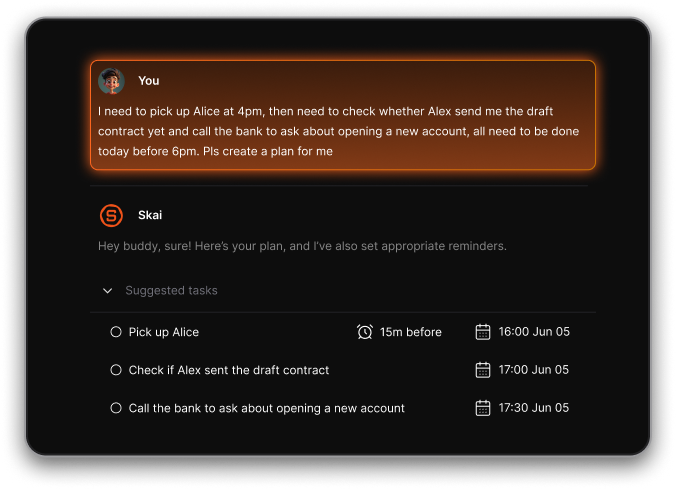
3. Can technology help manage ADHD without medication?
Absolutely. ADHD brains thrive on external structure. The right tools reduce friction, decision overload, and forgetfulness.
Saner.AI, for example, helps by:
- Turning brain dumps into actionable to-dos
- Reminding you at the right time, not just when you remember
- Organizing notes, tasks, and calendar automatically
- Keeping your day plan flexible, but not chaotic
It's like having a calm, non-judgmental assistant who understands how your brain works - and doesn’t get annoyed when you forget things.
4. What are the best apps to manage ADHD without medication?
Here are the top tools you can use to manage ADHD
- Saner.AI – For reducing mental overload by managing notes, reminders, and day plans in one place
- Structured – A visual daily planner with time-blocking built in
- Focusmate – Live virtual body doubling for accountability
Each serves a different role, but Saner is great if you want a lightweight, AI-powered system to keep you focused without constant tweaking.
5. Is it realistic to manage adult ADHD without medication?
It takes the right support systems. Key ingredients include:
- Self-awareness of triggers (e.g., time blindness, context switching)
- External scaffolding (checklists, reminders, planners)
- Supportive tools like Saner.AI to offload executive function tasks
- Compassionate routines that leave room for messy days
Think of it as building a team around your brain. And the right digital assistant can play a big part.
6. What is Saner.AI, and how does it help ADHD brains?
Saner.AI is a Personal AI Assistant designed to bring peace of mind to ADHD-prone professionals. It:
- Converts rants or messy notes into clear tasks
- Surfaces what’s important right when you need it
- Automatically organizes tasks, reminders, and calendar in one view
- Supports voice and chat-based input to reduce friction
For those managing ADHD without medication, Saner acts like a steady, always-there helper who doesn’t judge or forget.
Stay on top of your work and life

